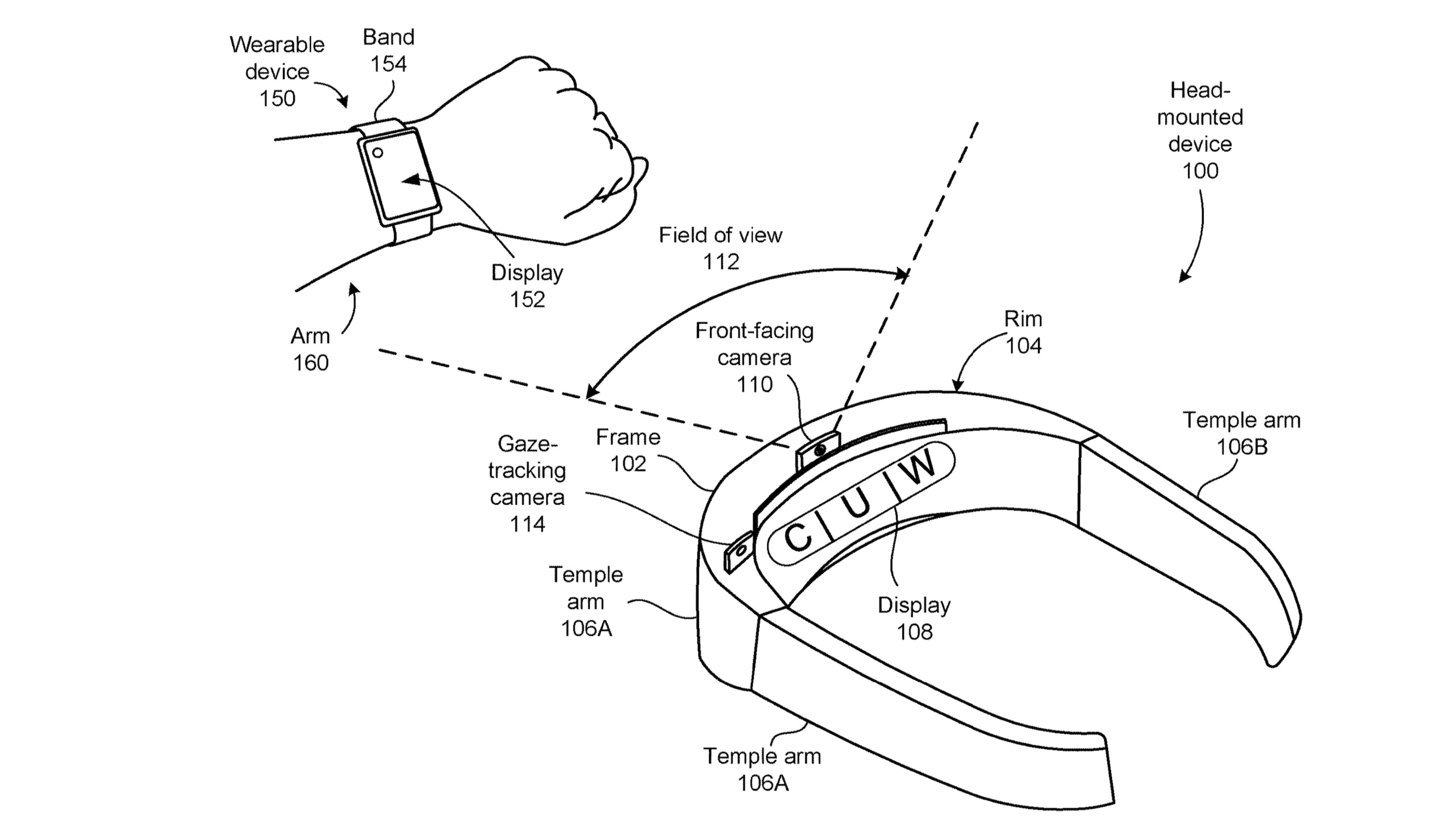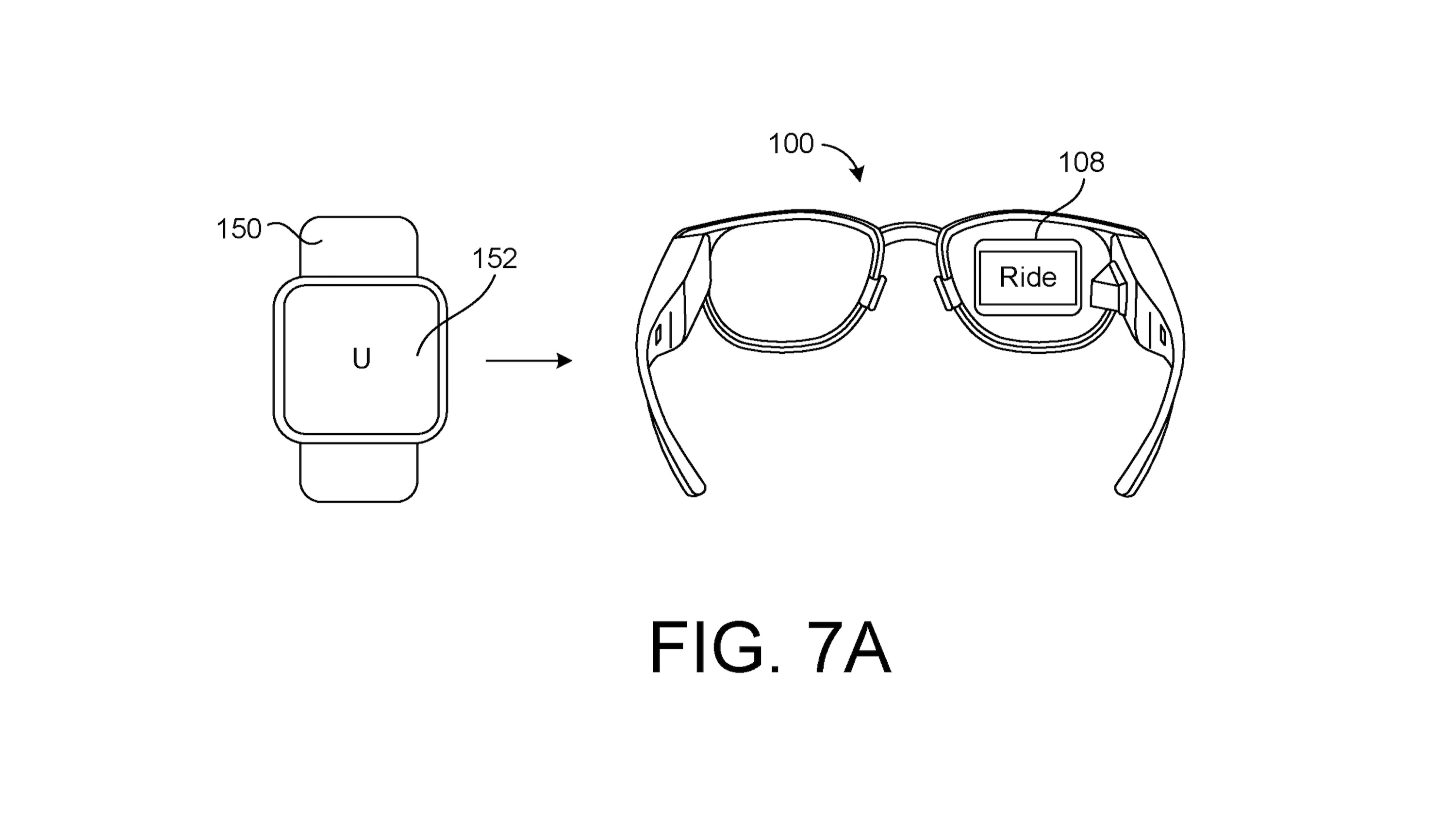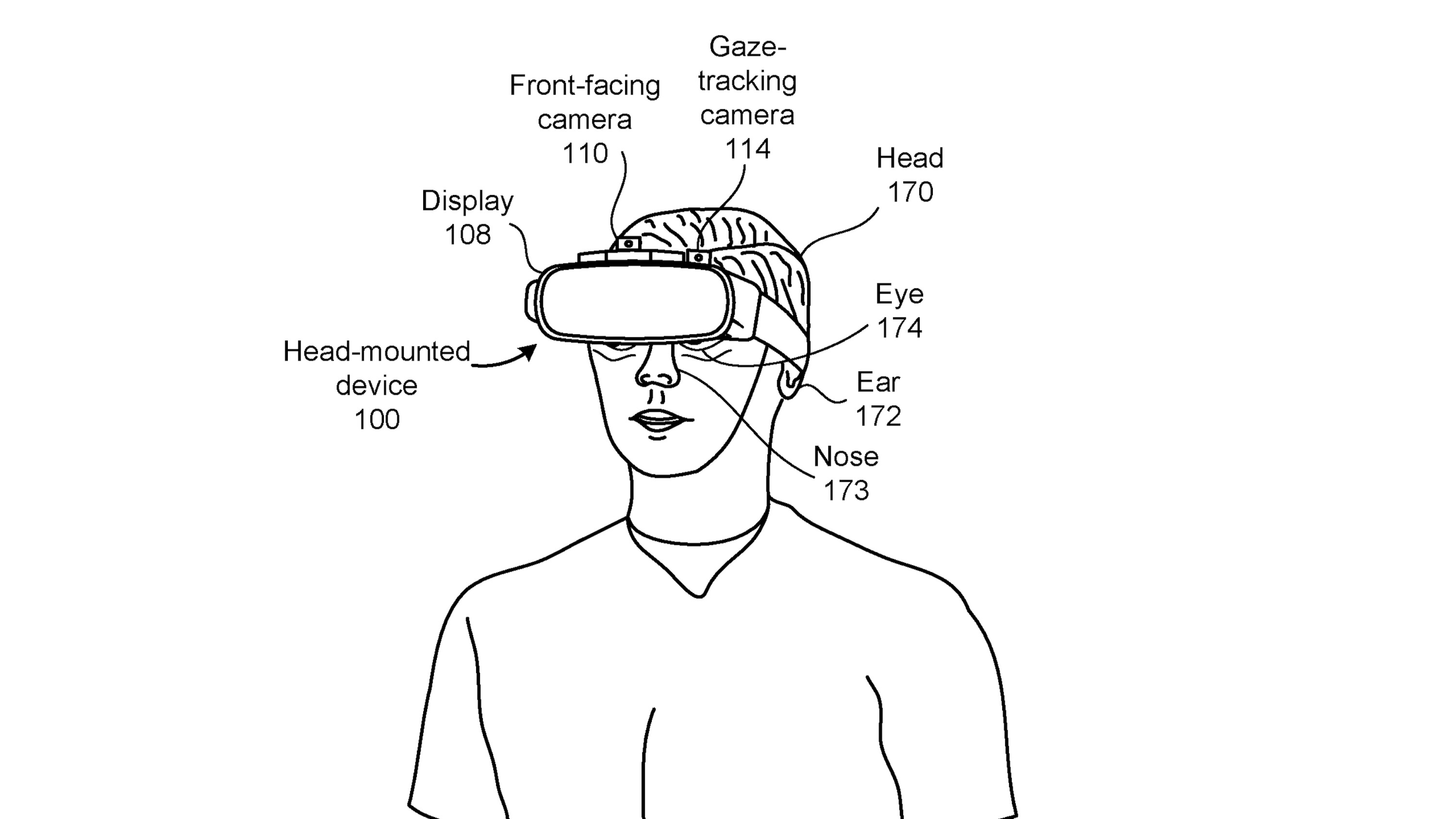
What you need to know
- Wareable spotted a Google U.S. patent for controlling a mixed-reality headset using touch controls on a smartwatch.
- The headset would detect if you're looking at the watch, at which point the Wear OS UI would switch to XR controls.
- Google is currently developing its own "Iris" XR glasses, as well as software for Samsung's own XR glasses.
Most upcoming XR headsets, like the Apple Vision Pro or Samsung's XR headset, are designed to work without traditional controllers. However, based on a November Google patent, it appears the next Google Glass or Project Iris headset will rely on your Pixel Watch or another smartwatch for controls instead.
Wareable first spotted the patent, titled "Controlling Head-Mounted Device with Gestures into Wearable Device." Google's idea is to have a VR or XR headset detect when you're looking at a smartwatch using a front-facing camera, then interpret your watch gestures as commands for the XR device's interface.
In one example, an illustration shows the user drawing a "U" on a smartwatch; in response, the headset opens up the Uber app. Another similar example has a "C" gesture pulling up the user's Google Calendar. The patent suggests that "the twenty-six letters of the alphabet" could each be associated with a separate application launch.
In another example, the XR headset already has an application open, and a smartwatch gesture control would control a cursor visible on the headset's display or allow you to swipe to another page.



The patent explains that the headset would receive raw gesture data from the watch and would save a "gesture library" that would interpret your actions in different ways.
The patent doesn't specify a specific smartwatch model, using a generic squircle design. We can assume that a Google headset would coordinate with a future Pixel Watch, while the Samsung XR headset could sync with a Galaxy Watch 7 next year. The only question would be how any smartwatch would differentiate between a swipe for the headset and a swipe for the watch's own UI.
A recent Pixel Watch 3 patent showed a touch bezel in place of the Pixel Watch 2's crown, with unique controls like squeezing the display or different lengths of swipes. It's possible that a Google XR headset could take advantage of these unique controls, too.
This patent shows an interesting counterpoint to a current trend with mixed-reality headsets. Most upcoming XR headsets, like the Apple Vision Pro and Samsung's headset, will rely on hand tracking, eschewing the gaming-focused controllers found in the Meta Quest 3. It's possible that this patent recognizes the fact that in some cases, touchscreen gestures would be more reliable.
For example, the aforementioned example of calling an Uber suggests Google is preparing for outdoor usage. Perhaps relying on gesture controls in public would embarrass the user, whereas a smartwatch gesture would be more natural.
Last month, we saw code evidence that Google intended to add Google Assistant to its XR glasses, letting you trigger a command with a button press. This new patent doesn't mean Google won't use Assistant, but rather means that Google is exploring multiple options. It tracks with Google's messy XR strategy, which has multiple hardware and software prototypes in development simultaneously.







